
Villem van Genk (1927- 2005) jedan je od najvažnijih nizozemskih autsajderskih umjetnika. Kao autist, shizofreničar i marksist, crtežima gradskih panorama, kolodvora, prometnih sredstava i sustava te skulpturama trolejbusa štitio se od tajanstvenih sila koje su se urotile protiv njega.




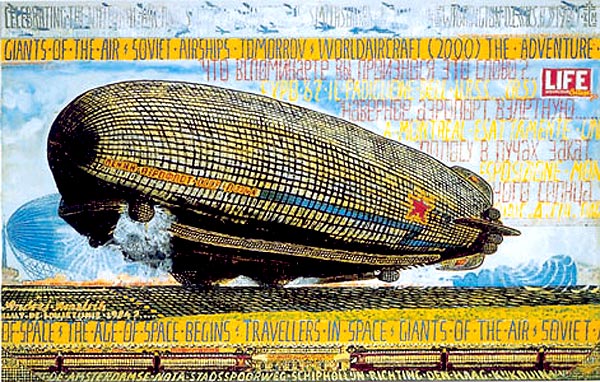
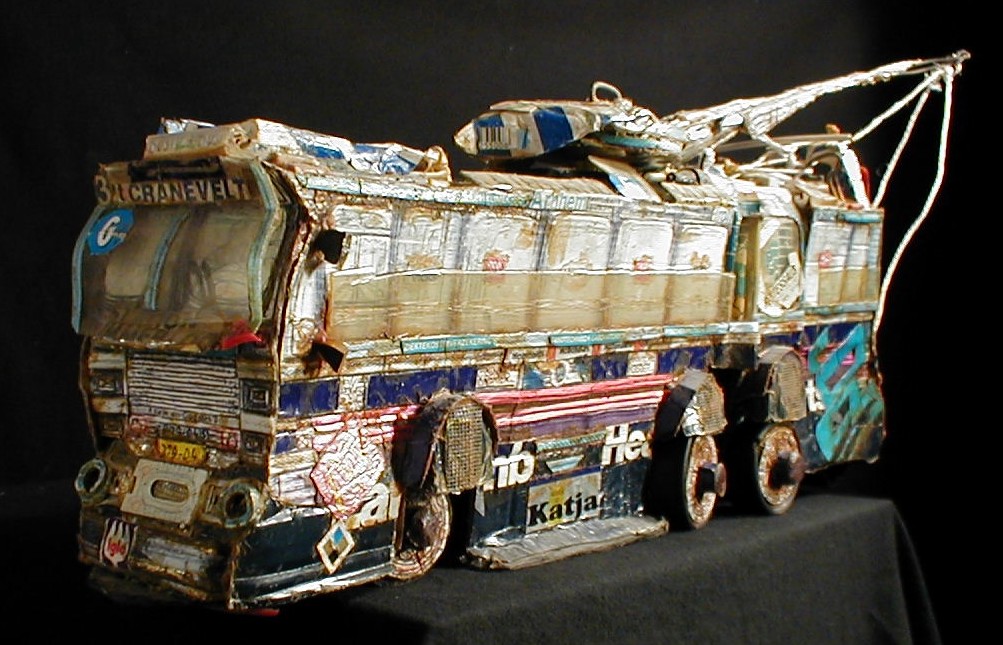

Van Genk began making trolley busses in the eighties. A Van Genk trolley bus is a many-layered assemblage of carefully selected materials. Technical-looking components are modelled onto the main shape with glue and string: huge headlights and searchlights, shiny window frames, reflectors and wiring looms that lead to remarkable push-buttons. Some of the busses have their trolley poles tied to the low-slung bumpers with chains and cords, but more often they simply hang limply. Passengers are rarely to be seen. Texts and reflective foils are stuck over the windows. Advertising slogans are endlessly repeated, and destinations are given much prominence. Wheels and hubcaps sometimes occupy a disproportionate place in the object, making the rows of windows rather undersized. But the cables and buttons, the technical components, remain the most important part. It is as though the engineering aspect of each bus has been magnified.
Reference: Van Berkum, Ans; Willem van Genk: a marked man and his world, Zwolle 1998, p. 119-122. - www.collectiedestadshof.nl/




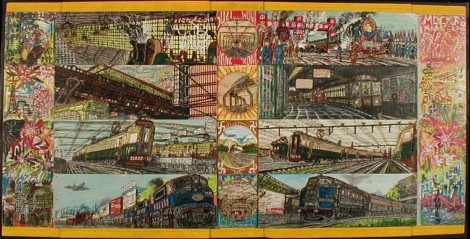
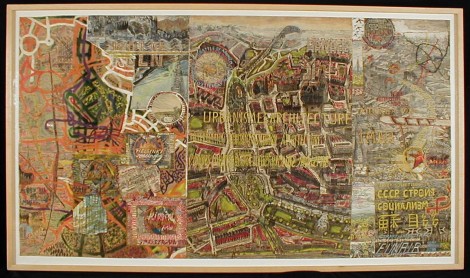
Willem van Genk (1927-2005) generally is seen as one of the most important outsider artists in the Netherlands. From the 90s of the former century on he has become better known, and nowadays his paintings and drawings can be found in the collections of a lot of outsider and folk art museums.
Van Genk did not make his visual art in order to becomie famous by public exhibitioning. He was reluctant to sell his artwork. For him, making these drawings, paintings, constructions, structures and collections, was meant to create his own world, a creation he had to do as a way to retain hold on his life, to overcome his fears, and to experience some feeling of power.
A problematic life
Willem van Genk was born in 1927 in the community of Voorburg, near the Hague, Netherlands..
He was autistic, which probably was not recognized in the time he grew up. At the age of five his mother died. He was educated by a father and nine sisters and at the age of ten he was sent to a boarding school.
uring the 1940/45 war, being a young person, he was interrogated by the german military police about the whereabouts of his father (who took part in the resistance).
This happening and the black leather coats of the Gestapo-men have made a deep impression on him. During all his life van Genk had an enormeous fascination for these black coats, which he would gather up in a big collection.
As a young man, Willem van Genk had some jobs, like one in an advertising agency. Although he made nice drawings, he could not adapt to the routine of the office. In the parental home he also could not maintain himself and he had to leave the house, going to live with one of his sisters in an apartment in the Hague.
He applied for admission to the art school at the Hague. The director, having recognized van Genk's talent, admitted him in, but the young man was not able to participate in the programs, so he remained an autodidact.
A number of times he was hospitalized in a psychiatric clinic. During a period of his life van Genk has been working in a sheltered workshop, but later he was declared incapacitated to work.
However, he also has been travelling through Europe. With a travel company he visited Paris, Rome, Madrid, Copenhague and Prague. He never visited Moscow, London and Tokyo, but he knew about these cities by studying travel guides and maps, so in this way he could make drawings of these urban settings, being interested in particular in bus and railway stations, nodes of urban traffic.
Creating his own world
As a way of coping with the problems of life, van Genk, at home, made paintings and drawings. He focused especially upon means of transport, like trains, busses and airplanes, and upon nodes of transport, like stations. He also constructed lots of models of buses and other transport facilities, recycling all kinds of used materials.
After his sister had died, van Genk lived alone in the house, and gradually it became filled with collages on the wall, the paintings and drawings he made, his collection of black coats, thousands of books, and all the creations and constructions he made of discarded material.
One of the larger creations is the installation which depicts the Arnhem bus station.
illem van Genk already was not the type of person to like an exuberant way of life, but when in the 6os dutch tv made a program about him, he was frightened, and withdrew from public life. Nevertheles, in 1964 and in 1976 he had expositions. He also had a relation with an art gallery, but had no intention to have his work sold to a broad public, he just agreed that some museums could buy his visual art.
In 1998 van Genk's health had deteriorated so far, that he had to be included into a nursing home, where he stayed untill his death in 2005.
The house where he had lived, in 1998 was vacated. The paintings and drawings, the books and the collection of coats have been saved. The large construction of the Arnhem bus station was added to the collection of the dutch outsider art society "de Stadshof" (that gave it on loan to be exposed in the dr Guislain museum, Gent, Belgium). - outsider-environments.blogspot.com/
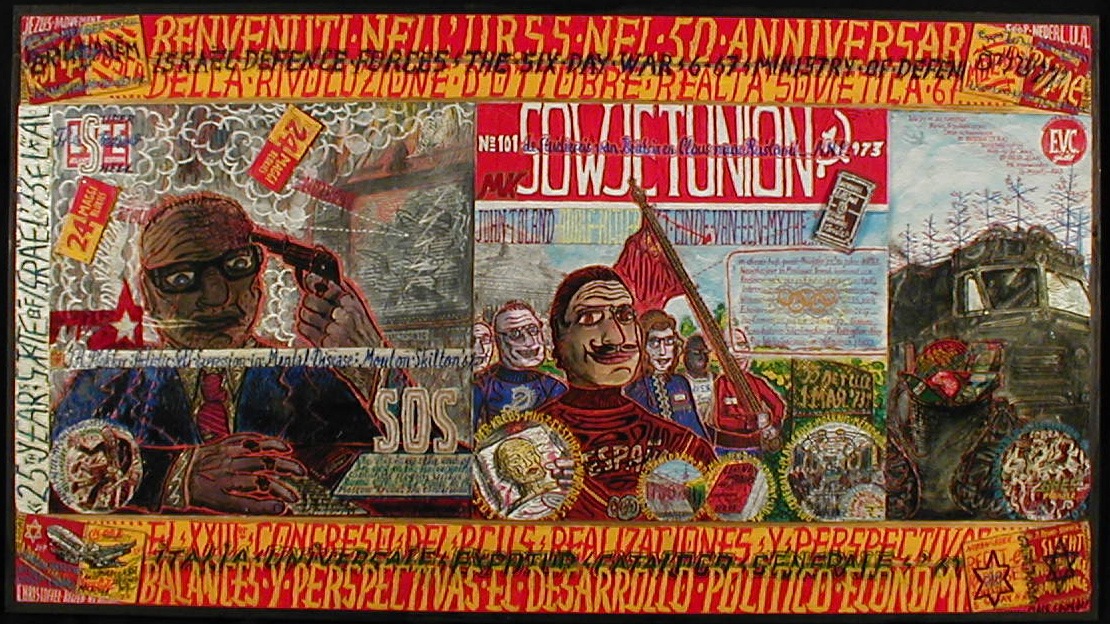
http://www.museumdrguislain.be/en/collectie/art-collection/70?task=view
http://www.nytimes.com/2005/01/28/arts/design/28smit.html?_r=5&
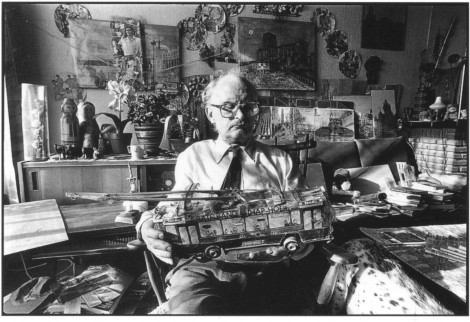
Nema komentara:
Objavi komentar